1. ALFA ROMEO 8C COMPETIZIONE
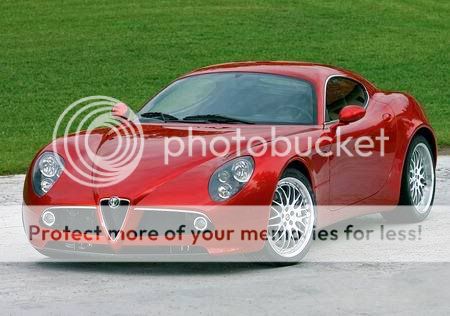
The Alfa Romeo Competizione is a sport car produced by Italian automaker Alfa Romeo. It was first presented as a concept car at the 2003 Frankfurt Motor Show and later released for sale for the 2007 model year.
Parent company : Fiat Group
Production : 2007-2009 (coupé) 500 units
Assembly :
Predecessor : Alfa Romeo SZ
Class : Sports car
Body style(s) : 2 -door coupé 2-door spider
Layout : FR layout
Engine(s) : 4.7 L (~287 cu in) V8
Transmission(s) : 6-speed Sequential manual
Wheelbase : 2646 mm (104.2 in)
Length : 4381 mm (172.5 in)
Width : 1894 mm (74.6 in)
Height : 1341 mm (52.8 in) (coupé) 1308 mm (51.5 in) (spider)
Curb weight : 1585 kg (3494 lb) (coupé) 1675 kg (3693 lb) (spider)
Fuel capacity : 88 L (23
Related : Maserati GranTurismo
Designer : Wolfgang Egger
Performance
It is fitted with specially developed 20 inch tyres: 245/35 at the front and 285/35 at the rear, fitted on perforated rims in fluid moulded aluminium. The 8C brakes have been called "phenomenal" by Road and Track magazine, with a stopping distance of 32 metres (105.0 ft), when travelling at an initial speed of 97 kilometres per hour (60 mph). The official top speed is announced to be 292 kilometres per hour (181 mph) but it might be higher, with estimations that it could be around 306 kilometres per hour (190 mph) according to the Road & Track magazine. An Alfa Romeo engineer also stated that it is faster than the announced top speed.
The Aston Martin DBS is a GT Car produced by the British manufacturer Aston Martin Lagonda Limited Originally produced from 1967-72, it featured in the 1969 James Bond film On Her Majesty’s Secret Service. A new version, based heavily on the Aston Martin DB9, is featured in the 2006 film Casino Royale and the 2008 film Quantum of Solace.
Manufacturer: Aston Martin Ltd.
Production: 1967–1972 787 produced
Predecessor: Aston Martin DB6
Successor: Aston Martin Vantage/Aston Martin DBSV8
Class: Grand tourer
Body style(s): 2-door coupe
Layout : FR layout
Engine(s): 4.0 L DOHC I6
Transmission(s): Borg-Warner automatic or 5-speed manual
Wheelbase: 2610 mm (102.8 in)
Length: 4585 mm (180.5 in)
Width: 1830 mm (72 in)
Height: 1330 mm (52.4 in)
Curb weight: 1590 kg (3505 lb) (approx)
Fuel capacity: 95.5 L (25.2 US gal; 21.0 imp gal)
Related: Aston Martin V8
Original DBS (1967-72)
The DBS was intended as the successor to the Aston Martin DB6, although the two ran concurrently for three years. Powered by a straight-6 engine, it was produced from 1967 until 1972, eventually being phased out in favour of the DBS V8 and the Aston Martin Vantage.
It was a larger coupé than the DB6, with four full sized seats, but was powered by the same 4.0 L engine as the previous car. The engine normally produced 282 bhp (210 kW; 286 PS), but a no-cost vantage spec engine option substituted Italian made Weber carburettors for the DBS' original SU units, thereby upping output to an advertised 325 bhp (242 kW; 330 PS).
The DBS was intended to have a more "modern" look than the previous series of Aston models (the DB4 through DB6), and it incorporated a fastback style rear end and squared off front grille, atypical of Astons, but very much then in vogue in automotive design circles of the late sixties. Trademark Aston design features, such as a bonnet scoop, knock off wire wheels, and side air vents with stainless steel brightwork were however retained.
Specifications (1972)
• Weight: 3,760 lb (1,706 kg)
• Engine: 4.0L DOHC straight-6
• Power: 283 bhp (211 kW; 287 PS) at 5500 rpm
• Torque: 390.5 N•m (288.0 lb•ft) at 3850 rpm
3. Maserati GranTurismo

The Maserati GranTurismo is a two-door 2+2 coupé produced by Maserati. The GranTurismo shares many design elements with the Ferrari 599 GTB Fiorano.
Manufacturer:Maserati
Parent company: Fiat Group
Production: 2007–present
Predecessor: Maserati Coupé
Class: Grand tourer
Body style(s): 2+2 coupé
Layout: FR layout
Engine(s): 4.2 L (4244 cc) 90° V8 4.7 L (4691 cc) 90° V8
Transmission(s): ZF 6-speed automatic MC-Shift Semi-automatic transmission
Wheelbase: 2,942 mm (115.8 in)
Length: 4,881 mm (192.2 in)
Width: 1,847 mm (72.7 in)
Height: 1,353 mm (53.3 in)
Curb weight: 1,880 kg (4,100 lb) (European market version)
Related: Maserati Quattroporte Ferrari 599 GTB Fiorano Alfa Romeo 8
Competizione
Designer: Jason Castriota under Pininfarina
>
Specifications
Engines
The engines are from Ferrari/Maserati V8 family.
| Model | Years | Type | Power, torque@rpm | Redline |
| GranTurismo | 2007- | 4.2L 4,244 cc (259.0 cu in) 90° V8 | 405 PS (298 kW ; 399 hp) @7100, 460 N·m (340 lb·ft) @4750 | 7250 |
| GranTurismo S | 2008- | 4.7L 4,691 cc (286.3 cu in) 90° V8 | 440 PS (324 kW; 434 hp) @7000, 490 N·m (360 lb·ft) @4750 | 7500 |
| GranTurismo S Automatic | 2009- | 4.7L 4,691 cc (286.3 cu in) 90° V8 | 440 PS (324 kW; 434 hp) @7000, 490 N·m (360 lb·ft) @4750 | 7200 |
| GranCabrio | 2010- | 4.7L 4,691 cc (286.3 cu in) 90° V8 | 440 PS (324 kW; 434 hp) @7000, 490 N·m (360 lb·ft) @4750 | ? |
Transmissions
| Model | Years | Type |
| GranTurismo | 2007- | ZF 6-speed automatic |
| GranTurismo S | 2008- | 6-speed sequential robotic with twin dry-plate clutch and paddle shifter |
| GranTurismo S Automatic | 2009- | ZF 6-speed automatic |
| GranCabrio | 2010- | ZF 6-speed automatic |
ZF transmission includes Auto Normal Mode, Auto Sport Mode, Auto ICE Mode, Manual Mode. Auto
Sequential robotic transmission includes Manual Normal and Manual Sport, Manual Sport with MC-Shift, Auto Normal, Auto Sport, Auto ICE modes.
The Aston Martin V8 Vantage and Aston Martin V12 Vantage are a hand built sports car series from the British manufacturer Aston Martin. Aston Martin has previously used the "Vantage" name on high performance variants of their existing GT models, notably on the Virage-based car of the 1990s. The modern car, in contrast, is the leanest and most agile car in Aston's lineup. As such, it is intended as a more focused model to reach out to potential buyers of cars such as the Porsche 911 as well as the exotic sports and GT cars with which Aston Martins traditionally compete.
Manufacturer: Aston Martin Lagonda Limited
Production start: 2005
Model year(s): 2006–present
Class: Grand tourer
Body style(s): 2-door coupé 2-door roadster
Layout: FR layout
Platform: VH Platform
Engine(s): 4.3 L AJ V8, 4.7 L AJ V8, 6.0 L V12
Transmission(s): 6-speed Manual, 6-speed Sportshift semi-automatic
Wheelbase: 2006-07: 102.4 in (2,601 mm)
2008-present: 102.5 in (2,604 mm)
Length: 172.5 in (4,382 mm)
Width: 73.5 in (1,867 mm)
Height: 2006-07: 49.4 in (1,255 mm)
Roadster: 2006-07: 50.0 in (1,270 mm)
2008-Present: 49.5 in (1,257 mm)
Curb weight: 1,548 kg (3,413 lb)
Related: Aston Martin DB9
Designer: Henrik Fisker
Overview
Following the unveiling of the AMV8 Vantage concept car in 2003, the production V8 Vantage was introduced at the Geneva Motor Show in 2005 for the 2006 model year. The two seat, two -door coupé had a bonded aluminium structure for strength and lightness. The 172.5 inch (4.38 m) long coupé featured a hatchback-style tailgate for practicality, with a large luggage shelf behind the seats. In addition to the coupé, a convertible was available known as the V8 Vantage Roadster.
The V8 Vantage was initially powered by a 4.3 L (4300 cc) quad-cam 32-valve V8 which produced 380 hp (280 kW) at 7,300 rpm and 302 lb•ft (409 N•m) at 5,000 rpm. Though based loosely on Jaguar's AJ-V8 engine architecture, this engine was unique to Aston Martin and featured race-style dry-sum lubrication, which enabled it to be mounted low in the chassis for an improved center of gravity. The cylinder block and heads, crankshaft, connecting rods, pistons, camshafts, inlet and exhaust manifolds, lubrication system, and engine management were all Aston Martin designs and the V8 engine was assembled by hand at the AM facility in
The engine was front mid-mounted with a rear-mounted transaxle, giving a 49/51 front/rear weight distribution. Slotted Brembo brakes were also standard. The original V8 Vantage could accelerate to 60 mph (97 km/h) in 4.7 seconds topping out at 178 mph (286 km/h). Vantages with the enhanced 400 HP version of the 4.3 L V8 engine (included with the "N400" package or available individually as a Power Upgrade kit) as well as later models with the 4.7 L V8 and 5.9L V12 were even faster.
The V8 Vantage retailed for £79,000, US$110,000, or €104,000 in 2006, Aston Martin planned to build up to 3,000 per year. Included was a six-speed manual transmission and leather-upholstery for the seats, dash, steering-wheel, and shift-knob. A six-speed sequential manual transmission, similar to those produced by Ferrari and Lamborghini, called Sportshift was introduced later as an option.
In their 2006 readership survey, readers of Car Design News voted the Aston Martin V8 Vantage as the best current production car design. The survey results were based on over 1000 responses, most from working automotive designers and students of industrial and automotive design. The Vantage was also voted one of Automobile magazine's 2007 "All Stars" for its performance, road manners, and design. The V8 Vantage is also one of the only two cars to be added to "the fridge" – reserved for the super-"cool" – on the BBC's Top Gear (on which it is described as the baby Aston to differentiate it from the V12 powered DB9). The program rates cars from seriously un-cool to sub-zero. The fridge was an extra category added when the presenters deemed the Aston Martin DB9 too cool for the sub-zero category. In the 2005 awards, Jeremy Clarkson declared the V8 Vantage as the coolest car of the year, while the award winner was actually the Porsche 911. The Andre Gayot guide gave the 2007 version 4 1/2 stars out of 5, one of the highest scores ever awarded. While the V8 Vantage remains a rare and special car by any standard, the success of the model is highlighted by the completion of chassis number 10,000 - a specially ordered Onyx Coupe delivered to a customer in
5. PONTIAC SOLSTICE COUPE

The Pontiac Solstice was a small sports car from the
The Solstice was nominated for the North American Car of the Year award and Design of the Year award from the Automobile Journalists Association of Canada (AJAC) for 2006. It was a runaway hit for
Production ended with the closure of the Wilmington Assembly plant in July 2009, although the 2010 model was made in limited numbers.
Manufacturer: General Motors
Production: 2005–2009
Model year(s): 2006–2010
Assembly: Wilmington, Delaware, United States
Class: Roadster, coupe
Body style(s): 2-door convertible, 2-door coupe
Layout: FR layout
Platform: GM Kappa platform
Engine(s): 2.4 L Ecotec LE5 I4, 2.0 L Ecotec LNF I4, 177 hp
Turbocharged 260 hp (GXP)
Transmission(s): 5-speed Aisin AR5 manual, 5-speed 5L40-E automatic
Wheelbase: 2416 mm (95.1 in)
Length: 3993 mm (157.2 in)
Width: 1811 mm (71.3 in)
Height: 1273 mm (50.1 in)
Coupe: 50.9 in (1293 mm)
Curb weight: 1305 kg (2877 lbs)
Related: Saturn Sky, Opel GT, Daewoo G2X
Designer: Franz von Holzhausen, Vicki Vlachakis, and Wayne Cherry
Solstice Coupe (2009)
A targa coupe version of the Solstice was unveiled at the 2008 New York Auto Show. Engine choices are the same as the convertible versions. The roof can be removed, but the hard roof cannot be fit into the trunk. An optional cloth top is available, which can be fit into the trunk. The car went on sales in early 2009.
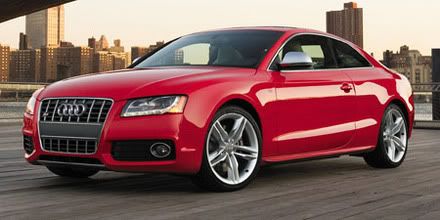
The Audi S5 was released to the public at the same time as the A5. Its engine is a 4.2 L Fuel Stratified Injection (FSI) V8 engine, producing 354 PS (260 kW; 349 hp) at 6800 rpm and 440 N•m (325 lb•ft) at 3,500 rpm. The S5 Cabriolet receives instead the S4’s supercharged 3.0 L V6 TFSI petrol engine.
The Audi S5 features a more aggressive fascia (as do most Audi S and RS models, including a string of LED daytime running lights around the bi-Xenon headlamps. The Audi S5 also comes standard with larger 19" alloy wheels (with different design), bigger brakes, heated leather sport seats, and other convenience features, some of which are available as an option on the standard A5.
As of 2009, there will be an Audi S5 Cabriolet on sale as a 2010 model. Scheduled release is fall of 2009.
Manufacturer: Audi
Parent company: Volkswagen Group
Production: 2007–present, 26,041 built[clarification needed]
Predecessor: Audi 80 (coupe), Audi A4 cabriolet
Class: compact executive car/entry-level luxury car
Body style(s): 2-door coupe, 2-door convertible,
5-door liftback (2009-; proposed)
Layout: longitudinal front engine,
front-wheel drive / quattro permanent four-wheel drive
Platform: MLB/MLP
Engine(s): 1.8L I4 TFSI,
2.0L TFSI,
3.2L V6 FSI,
4.2L V8 FSI,
2.7L V6 TDI,
3.0L V6 TDI
Transmission(s): 6-speed manual,
6-speed tiptronic automatic,
Multitronic CVT
Wheelbase: 2751 mm (108.3 in)
Length: 4630 mm (182.3 in)
Width: 1854 mm (73 in)
Height: 1374 mm (54.1 in)
Kerb weight: 1610 kg (3549 lb)
Fuel capacity: 64 L (14.1 imp gal; 16.9 US gal)
Designer: Walter Maria de'Silva
7. MERCEDES-BENZ CLS-CLASS
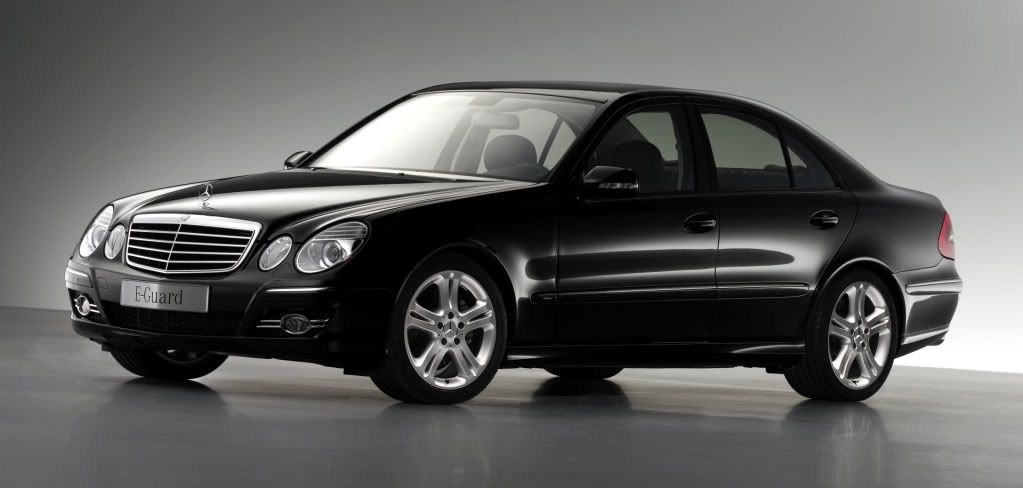
The Mercedes-Benz CLS is an executive-size sedan based on the W211 E-Class platform. Marketed as a 'four door coupe,' the CLS recalls the fastback saloon designs of Robert Opron in the 1970s. According to a Mercedes-Benz press release, the CLS-class was produced to combine the "strong, emotive charisma" of a coupe with the "comfort and practicality" of a saloon. Save for its four-door design, the CLS's design tends towards a coupe, as its sleek roofline reduces the rear passenger room to a 2+2 arrangement, and it offers a smaller selection of engines tending towards high powered of the range, compared to contemporary sedans such as the E-Class.
The current iteration of the CLS is internally designated as the C219 and it was first offered for sale in
Manufacturer: Mercedes-Benz
Parent company: Daimler AG
Production: 2004–present
Assembly: Sindelfingen, Germany
Santiago: Tianguistenco, Mexico
Class: executive car
Body style(s): sedan/4-door coupé/fastback
Layout: FR layout
Platform: Mercedes-Benz W219
Engine(s): 3.5L 272 hp (203 kW) V6
5.0L 302 hp (225 kW) V8
5.5L 382 hp (285 kW) V8
5.4L 469 hp (350 kW) Supercharged V8
6.2L 507 hp (378 kW) V8
3.2L 225 hp (168 kW) Turbo Diesel V6
Transmission(s): 7-speed automatic
5-speed automatic
Wheelbase: 2855 mm (112.4 in)
Length: 4910 mm (193.3 in)
Width: 1873 mm (73.7 in)
Height: 1389 mm (54.7 in)
Related: Mercedes-Benz E-Class
Background
The CLS marked Mercedes-Benz's return to the executive-size coupe market since the (W124) E-Class Coupe (a two-door sedan) went out of production in 1995. The (W210) E-Class did not spawn a coupe variant, as Mercedes-Benz choose instead to introduce a smaller coupe based on the compact C-Class, the CLK-Class. However, the CLK-Class was built with a lengthened C-Class wheelbase so it could be slotted as a mid-sized vehicle, and it also featured styling cues, engines, and similar pricing to the (W210) E-Class to give the impression that the (W124) E-Class Coupe was directly replaced.
The CLS name also caused some to confuse it as the four-door version of the CL-Class, the full-sized coupe based on the S-Class. Indeed, the styling cues of the next generation C216 CL have been strongly influenced by the CLS.
Priced to slot between the mid-sized E-Class and the full-sized S-Class, it competes in the range which was previously solely occupied by the BMW 6-series. Prior to the launch of the CLS, Mercedes had no direct answer to the executive-sized 6-series which positioned itself between the compact/mid-sized CLK and the full-sized CL. The CLK is slotted between the BMW 3 series coupe/cabriolet and the 6 series coupe/cabriolet, while the CL has no direct competitor. Others maintain, however, that the CLS has no direct competitor.
During its development, Mercedes-Benz executives nicknamed the CLS the "Jag fighter," hoping that it would be the type of vehicle that Jaguar customers would be attracted to. Jaguar, however, has not launched a four-door coupe since production until recently announced as the 2009 Jaguar XF sedan. Due to the popularity of the CLS-Class, other manufacturers are offering similar four-door coupes.
Features
Mercedes-Benz has put all of its latest safety features into the CLS-class. In addition to front airbags, there are side-impact airbags in the front seats and side curtain airbags throughout. The car features a "smart" sensor system for the seatbelts and airbags that can detect and react to accident severity. An optional Pre-Safe system predicts an impending collision; when the system is activated, the seatbelts tighten, the front passenger seat adjusts to crash positioning, and the sunroof closes automatically. Mercedes-Benz engineers describe the feature as a human-like reflex system.
The air suspension has three settings. The default setting, "Comfort," is ideal under normal driving conditions, stiffening as the car's speed increases. "Sport 1" and "Sport 2" settings give the car more agility on winding and bumpy roads. The car can also be raised three inches (76 mm) , if needed.
The CLS-class comes with a choice of four interior colors, three types of leather and two kinds of wood. Leather interior comes standard, with Nappa leather upholstery available on designo models. Burl walnut and dark laurel wood interior trim are available in either a high-gloss or silk matte finish. Leather colors include Black, Basalt Gray, Sunset Red and
There are 33 inches (838 mm) of rear legroom, which is not quite as accommodating as the 35.6 inches (904 mm) available in the E-Class. Elbow room is generous at 57 inches (1448 mm). The trunk can hold 16 cubic feet (453 L) of cargo.
The following features are standard in all models: heated auto-dimming mirrors, outside temperature gauge, rain-sensing wipers and projector-beam headlights. Also standard is a Thermatic automatic climate control system; this system assesses and adjusts interior temperature and humidity levels and filters the air in the cabin. There are dual controls in both the front and rear seats.
Other available features include: self-cleaning bi-xenon HID headlamps, distronic radar-guided cruise control, power sunroof, keyless go, drive authorization system and Parktronic parking sensors. Available electronics include: COMAND control system, GPS navigation and surround sound audio.
The CLS 55 AMG and CLS 63 AMG are modified versions of the CLS produced by Mercedes-AMG. Features exclusive to AMG models include: perforated sport seats, 18 inch (457 mm) light-alloy wheels with wider tires (for the
8. PORSCHE CAYMAN
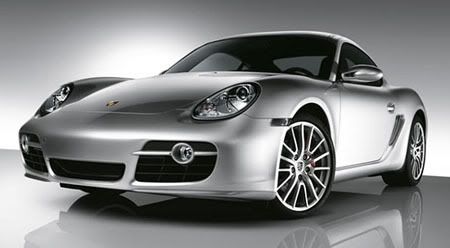
The Porsche Cayman is a mid-engined, rear wheel drive 2-seat sports car produced by Porsche AG of Germany. First launched in the 2006 model year, the Cayman is a coupé derived from Porsche's second generation Boxster convertible. Like the Boxster, most Caymans are assembled in Finland for Porsche by Valmet Automotive (the rest are assembled in Zuffenhausen near Stuttgart, Germany). Porsche's Deputy Chairman, Holger P. Haerter confirmed that their contract with Valmet Automotive will end in 2012, and the Cayman's production will be outsourced to Magna Steyr Fahrzeugtechnik of Graz, Austria. (Panorama, 2008)
Manufacturer: Porsche
Also called: Porsche 987c
Production: 2005-present;
Assembly: Stuttgart, Germany, Uusikaupunki, Finland
Class: Sports car
Body style(s): 2-door coupé
Layout: RMR layout
Engine(s): 2.7 L flat-6
2.9 L flat-6
3.4 L flat-6
Transmission(s): 5-speed automatic
5-speed manual
6-speed manual
Wheelbase: 2416 mm (95.1 in)
Length: 4372 mm (172.1 in)
Width: 1801 mm (70.9 in)
Height: 1305 mm (51.4 in)
Curb weight: 1,340 kg (2,954 lb)
Related: Porsche 987
Porsche 997
Designer: Pinky Lai
Development
After two years of development, the first model of the coupé to be released was the Cayman S (type 987.120). Photographs and technical details were released in May 2005, but the public unveiling did not take place until the September Frankfurt Motor Show. The S suffix (an acronym for Sport or Special) indicated that this was a higher performance version of a then unreleased normal model. That model, the Cayman (987.110), went on sale in July 2006. A motorsport-tuned model, the Cayman RS, is rumored to have been tested at the Nürburgring that same year.
The Cayman coupé (project 987c) and the second generation Boxster convertible (project 987) share the same mid-engined platform and many components, including the front fenders and trunk lid, side doors, headlights, tailights and forward portion of the interior. The design of the Cayman's body incorporates styling cues from two classic Porsches; the 550 Coupé and the 904 Coupé. Unlike the Boxster, the Cayman has a large hatchback for access to luggage areas on top and in back of the engine cover. The suspension design is fundamentally the same as that of the Boxster, but features revised settings appropriate to the increase in chassis stiffness resulting from the Cayman's fixed roof.
The 3.4 litre flat-6 boxer engine (M97.21) in the Cayman S is derived from the 3.2 litre powerplant (M96.26) that was used in the Boxster S, but features cylinder heads from the Porsche 997 S's 3.8 litre motor (M97.01) which have the VarioCam Plus inlet valve timing and lift system. A less powerful but more fuel efficient version, the 2.7 litre M97.20, powers the base model. The use of these new powerplants exclusively in Caymans ended in MY 2007 when Porsche upgraded the Boxster (987.310) and Boxster S (987.320).
A 5-speed manual transaxle is standard on the normal Cayman (G87.01), while a 6-speed manual (Getrag 466) is the default for the S (G87.21) and an option on the normal (A87.20). An electronically controlled 5-speed automatic transaxle (Tiptronic) is also available on the S (A87.21) and the non-S version (A87.02) (The 2009 models replace this option with a seven-speed "PDK", Porsche's dual-clutch robotic manual transmission). Other options include active shock absorbers (ThyssenKrupp Bilstein GmbH's DampTronic, rebadged as PASM by Porsche), ceramic disc brakes (PCCB), xenon headlights (Hella's Bi-Xenon) and an electronically controlled sport mode (Sport Chrono Package).
Performance
The performance of the Cayman S approaches that of Porsche's flagship sports car, the 911 Carrera. Rally legend Walter Röhrl lapped the Nürburgring Nordschleife track in a Cayman S equipped with optional 19" wheels, PCCB, and PASM in a time of 8 minutes, 11 seconds. The time for a standard Cayman S, as published by the manufacturer, was 8 minutes, 20 seconds. In contrast, Röhrl recorded 8 minutes, 15 seconds in a 911 Carrera. The similarity in performance between the two cars has led to speculation about whether the Cayman S will cannibalize sales of the Carrera, as the basic Carrera's recommended retail price in the
A Cayman prepared and run by privateers Jürgen and Uwe Alzen finished fourth overall (of 220 entrants) in the 2007 Nürburgring 24 Hour race, ahead of two flagship Porsche 997 GT3 RSR's, a 997 GT3 Cup, and a 996 GT3 Cup. Another two privateer Caymans, entered by CSR and MSpeed, finished 22nd and 117th overall, respectively. Porsche disclaims support for the Cayman teams, while supporting some or all of the 997 teams.
A sports car feature which is not offered by Porsche for the Cayman is limited slip differential (LSD). Some commentators have speculated that LSD is not offered, even as an option, because the Cayman S's performance would then be too close to that of the 911 Carrera (see Crippleware). Several tuning companies offer Cayman buyers the ability to retrofit an LSD. Also the biggest engine (3.8l) or the turbo engine is not available in the Cayman.
In the 2009 model, an LSD is available as an option if PDK is installed. The base Cayman has received an engine upgrade to 2.9L (265 bhp (198 kW; 269 PS)), and the Cayman S a 3.4L (320 bhp (239 kW; 324 PS)). This is significantly more than the previous models offerings, as even the factory tuned 2008 Cayman S Sport with its special exhaust system only produces 303 bhp (226 kW; 307 PS) from its 3.4L powerplant.
9. AUDI R8

The Audi R8 is a sports car with a longitudinally mounted mid-engine, and uses Audi's 'trademark' quattro permanent four-wheel drive system. It was introduced by the German automaker Audi AG in 2006. The car was exclusively designed, developed, and manufactured by Audi AG's high performance private subsidiary company, quattro GmbH, and is derived from the Lamborghini Gallardo. The fundamental construction of the R8 is based on the "Audi Space Frame", and uses an aluminium monocoque which is built around a space frame. The car is built by quattro GmbH in a newly renovated factory at Audi's 'aluminium site' at Neckarsulm in Germany.
In 2005, Audi announced that the name of the successful Audi R8 race car would be used for a new road car in 2007, the Audi R8, based on the Audi Le Mans quattro concept car, appearing at the 2003 International Geneva Motor Show, and 2003 Frankfurt International Motor Show. The R8 road car was officially launched at the Paris Auto Show on 30 September 2006. There was some confusion with the name, which the car shares with the 24 Hours of Le Mans winning R8 Le Mans Prototype (LMP), and also the 1989 Mk2 Rover 200, codenamed R8.
The Audi R8 is used as a safety car in Deutsche Tourenwagen Masters and British Superbike Championship racing series.
Manufacturer: quattro GmbH, (a private subsidiary of Audi AG)
Parent company: Volkswagen Group
Production: 2006–present, 9,945 built in the end of 2008
Assembly: Neckarsulm, Germany
Predecessor: none
Successor: none
Class : Sports car
Body style(s): 2-door coupé (2007)
2-door convertible (2009)
Layout: Longitudinal mid-engine,
quattro permanent four-wheel drive
Engine(s): 4.2 L FSI V8, 2xDOHC;
5.2 L FSI V10, 2xDOHC
Transmission(s): 6-speed manual,
6-speed "R tronic" single-clutch semi-automatic
Wheelbase: 2,649 mm (104.3 in)
Length: 4,431 mm (174.4 in)
Width: 1,904 mm (75.0 in)
Height: 1,249 mm (49.2 in)
Kerb weight: V8: 1,560 kg (3,439 lb),
V10: 1,620 kg (3,571 lb)
Fuel capacity: 75 L (16.5 imp gal; 19.8 US gal)
Related: Lamborghini Gallardo
Powertrain
The Audi R8 was initially equipped with a 4.2 litre V8 internal combustion engine. Specific detail: it is an all-aluminium alloy 32-valve (four valves per cylinder) petrol engine, utilising Fuel Stratified Injection (FSI), and has a displacement of 4,163 cc (254.0 cu in). It develops a motive power output of 309 kilowatts (420 PS; 414 bhp), and generates 430 newton metres (317 ft·lbf) of torque, on 98 RON 'Super Unleaded' petrol. It is basically the same engine used in the B7 Audi RS4, but is modified to use dry sump lubrication system. This V8 is a highly reworked, high-revving variant from the existing 4.2 litre V8, but includes cylinder-direct fuel injection (Fuel Stratified Injection), and four valves per cylinder, instead of five (as used on the non-FSI variants). It also uses two chain-driven double overhead camshafts (DOHC) per cylinder bank, and utilises variable valve timing for both inlet and exhaust camshafts.
A new additional variant with a 5.2 litre Fuel Stratified Injection (FSI) V10 engine was added on
The transmission options are either a Lamborghini sourced manual gearbox with metal gate for the shift lever, or an Audi-developed "R tronic" gearbox - which is a single-clutch semi-automatic electrohydraulic manual transmission, without a traditional clutch pedal. These options are the same as those available on the Lamborghini Gallardo. A double-clutch Direct-Shift Gearbox (DSG), now badged by Audi as "S tronic", is not available (as of December 2008).
Other Technical Details
As Audi AG owns Lamborghini (Automobili Lamborghini S.p.A.), some of the R8 is shared with the Lamborghini Gallardo, including some of the chassis and floorpan, transmissions, and the revised V10 engine. The R8 is made distinct by its Germanic exterior styling, cabin, smaller V8 engine, magnetic dampers, and pricing.
The R8 (with the V8 engine) has a dry weight of 1,560 kilograms (3,439 lb). Its suspension uses magneto rheological dampers.
Safety features include Bosch ESP 8.0 Electronic Stability Programme with Anti-lock Braking System ABS, front dual-stage airbags, and 'sideguard' curtain airbags. The R8 also features state-of-the-art LED safety light bars mounted just under the headlamps.
The R8, like most mid- or rear-engine designed sports cars, utilises wider roadwheels and tyres on its rear axle. For the 18 inch alloy wheels (on standard summer tyres), there is just one range of sizes - the fronts are sized at 8.5Jx18H2 ET42, whilst the rears are two inches wider at 10.5Jx18H2 ET50. With the 19 inch wheels, the theme continues - the fronts are all 8.5Jx19H2 ET42, and the rears are 11.0Jx19H2 ET50. 19" wheels for the winter tyre package have a ½" narrower rear compared to the summer tyre wheel package. There is also a corresponding difference in tyre sizes - 18's are 235/40 ZR18 95Y XL (eXtra Load) up front and 285/35 ZR18 101Y XL at the rear. For the 19" tyres, two different options are available - all fronts are 235/35 ZR19 91Y, and the rears are either 295/30 ZR19 100Y XL or 305/30 ZR19 102Y XL. Standard factory supplied tyre makes offered are either Continental SportContact3, or Pirelli P-Zero Rosso.
Amongst the options list for the Audi R8 are a Bang & Olufsen sound system, and "Audi ceramic" Carbon fibre-reinforced Silicon Carbide (C/SiC) composite brakes with monobloc alloy Brembo calipers on all four wheels (six-opposed piston at front, four-opposed piston at rear), with SGL Carbon 'ceramic' discs mounted on lightweight alloy disc 'bells'.
10. LOTUS ELISE
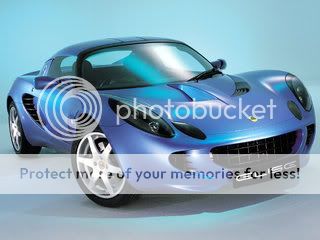
The Lotus Elise is a two seat, rear-wheel drive, mid-engined roadster conceived in early 1994 and released in September 1996 by the English manufacturer Lotus Cars. The car has a hand-finished fibreglass body shell atop its extruded aluminium and bonded chassis that provides a rigid platform for the suspension, while keeping weight and production costs to a minimum. The roadster is capable of speeds up to 240 km/h (150 mph). The Elise was named after Elisa, the granddaughter of Romano Artioli who was chairman of Lotus at the time of the car's launch.
Manufacturer: Lotus Cars
Production: 1996–present
Assembly: Hethel, Norfolk, England.
Predecessor: Lotus Elan[1]
Class: Sports car
Body style(s): 2-door roadster
Layout: Rear mid-engine, rear-wheel drive
2008 Models
For 2008, there are several additions to the Lotus line-up. There are two versions of the Elise. Lotus will continue to provide a naturally aspirated Elise producing 189 hp (141 kW). The second version is the Elise SC sporting a non-intercooled supercharger producing 218 hp (163 kW). 0-60mph is reduced from 4.9 for the base Elise or 4.7 seconds for the Elise with Sport package to 4.3 seconds for the Elise SC. The NA Elise styling will be similar to the prior model years. The Elise SC, however, is distinguishable from the NA version by a rear spoiler identical to the Type 72-D edition spoiler and new wheels. Weight remains a Lotus-claimed 1,987 lb (901 kg); just 3 pounds (1.4 kg) more than the previous year.
In Europe, there are three models available; the Elise S with a 134 bhp (100 kW; 136 PS) , 1.8l Toyota 1ZZ-FE engine and 5 speed manual gearbox (0-60 mph in 5.8s, top speed 127 mph (204 km/h)); the Elise R with a 189 bhp (141 kW; 192 PS) , 1.8l Toyota 2ZZ-GE engine and 6 speed manual gearbox (0-60 mph in 4.9s, top speed 148 mph (238 km/h)); and the Elise SC with a 218 bhp (163 kW; 221 PS) , supercharged, 1.8l Toyota 2ZZ-GE, 6 speed manual gearbox and a spoiler (0-60 mph in 4.3s, top speed 150 mph (240 km/h)).
Several new colour options for 2008 have been brought to the marketplace. These include new metallic colours (additional $590) Persian Blue and Liquid Blue; new Lifestyle colour (additional $1200) Isotope Green; new Limited Colour Level (additional $3,300) Candy Red, Ice White, and Burnt Orange; and the new Exclusive Colour Level (additional $5,100) Prism Green and Moonstone Silver. The following colours have been discontinued for 2008: Nightfall Blue, Aubergine Purple, Magnetic Blue, Polar Blue, Autumn Gold, Chili Red, and Krypt

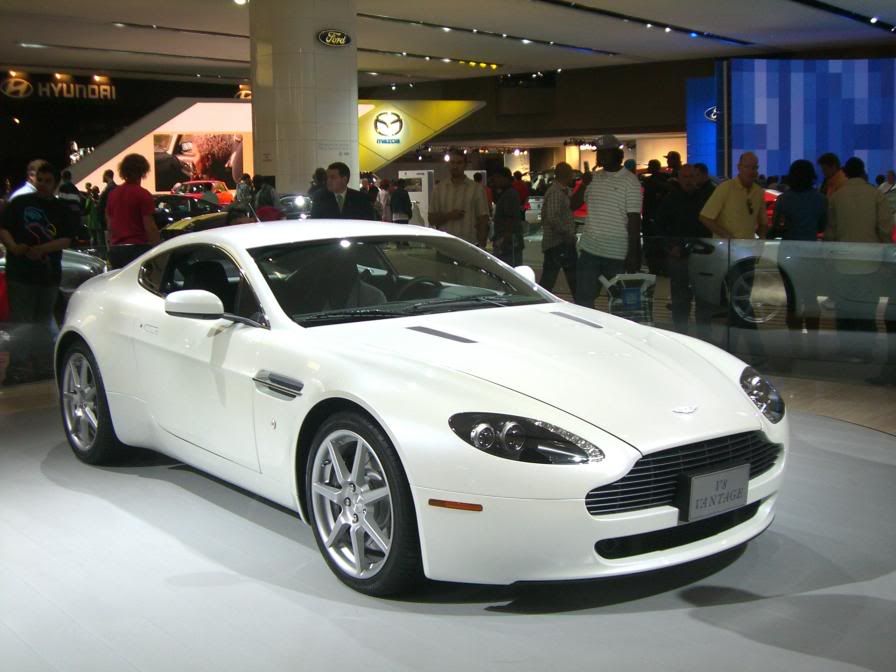



0 comments:
Post a Comment